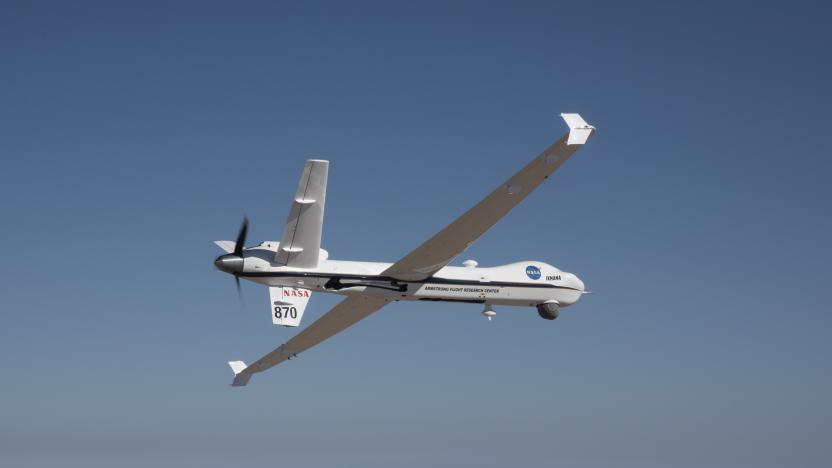Ikhana
Latest

NASA’s unmanned drone had its first solo flight in public airspace
NASA's remotely-piloted Ikhana aircraft flew in public airspace for the first time without a chase aircraft. Typically, one follows the large drone when it flies in parts of the sky zoned for use by commercial and private pilots, but the FAA granted the space agency a waiver to test out several key technologies they've been developing for years detect and avoid other aircraft. They wanted to know if this baby bird could fly on its own among piloted planes, and it passed the test.

Tiny airborne probe could help local weather forecasts
To date, it hasn't been easy to get loads of airborne weather data beyond major airports. Airliners have had a sophisticated probe system (TAMDAR Edge) for over a dozen years, but that doesn't help much in those remote areas where you may only see smaller airplanes or drones. NASA is close to covering this gap, though: it recently started test-flying a relatively tiny, lightweight version of TAMDAR Edge aboard an Ikhana drone. The tech promises real-time weather data on virtually any aircraft, filling in local atmospheric conditions even in barren places like the Arctic. You could have clearer indications of when a thunderstorm is brewing in a very specific region, or track previously unrecorded conditions above hurricanes.

NASA successfully tests detect-and-avoidance system for drones
NASA's Detect-and-Avoidance (DAA) system for drones is looking mighty promising. The agency has just finished its latest phase of of test flights using a remote-controlled Ikhana aircraft equipped with DAA sensors over the Mojave desert in California. NASA's Dennis Hines says they still have to fully analyze the data they gathered from the flights -- the third in a series -- but they found that the drone successfully alerted it remote pilots and performed preprogrammed maneuvers when faced with obstacles. Frank Pace, the president of Aircraft Systems for General Atomics Aeronautical Systems said the flight tests' favorable outcome "represents the maturity of [their] detect-and-avoid system."

NASA tests sense-and-avoid system for commercial UAVs
NASA's testing a sense-and-avoid system that will allow fully-autonomous, commercial UAVs to operate in civilian airspace. The trials are being held at the Armstrong Flight Research Center in California as part of the agency's Unmanned Aircraft Systems Integration in the National Airspace System (UAS-NAS) project.



